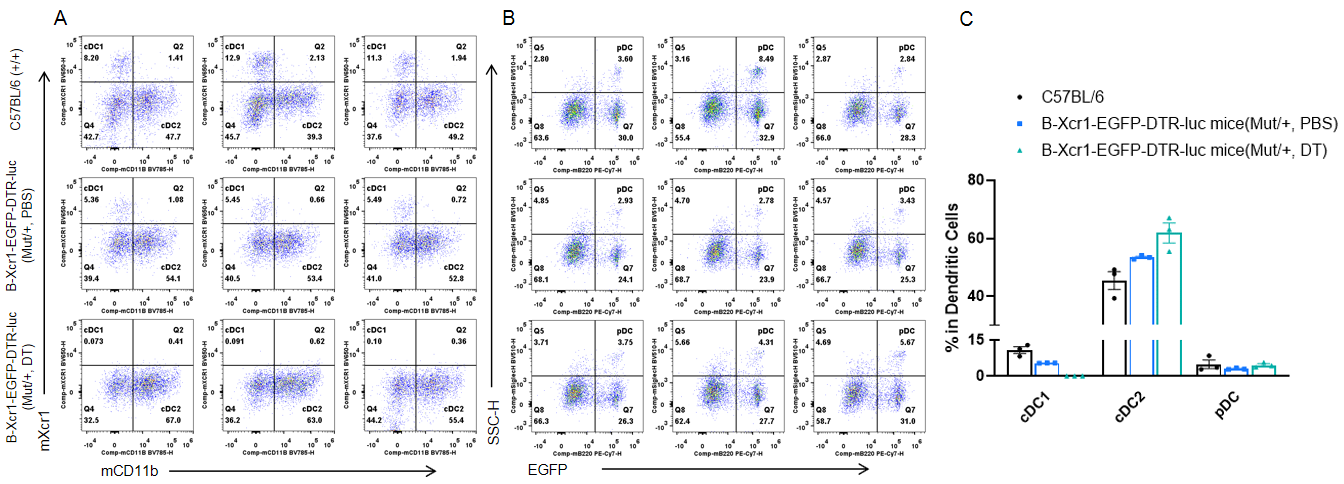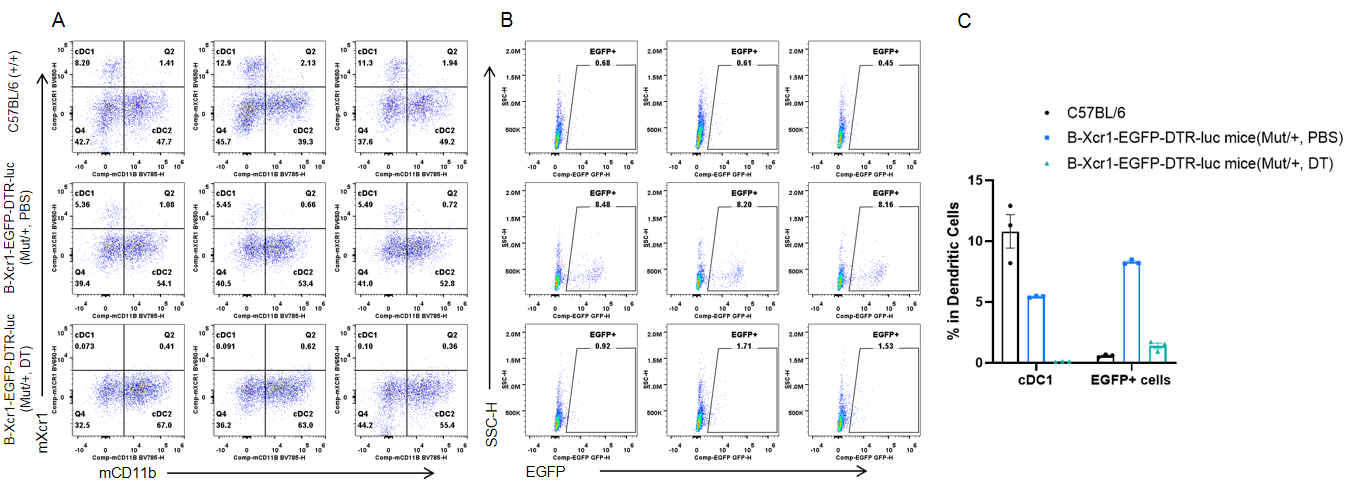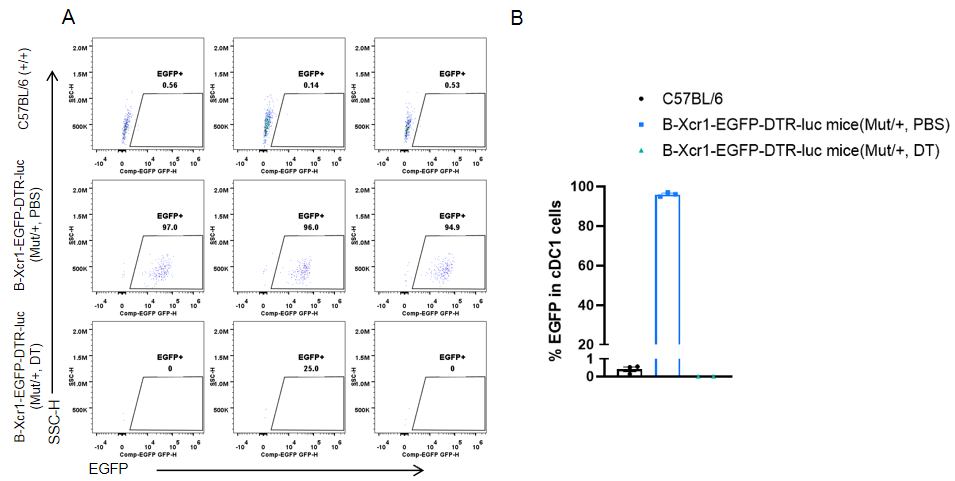


C57BL/6JNifdc-Xcr1tm1(EGFP-DTR-luc)Bcgen/Bcgen • 112854
| Product name | B-Xcr1-EGFP-DTR-luciferase mice |
|---|---|
| Catalog number | 112854 |
| Strain name | C57BL/6JNifdc-Xcr1tm1(EGFP-DTR-luc)Bcgen/Bcgen |
| Strain background | C57BL/6JNifdc |
| NCBI gene ID | 23832 |
| Official symbol | Xcr1 |
| Chromosome | 9 |
| Aliases | GPR5, CCXCR1 |
Gene targeting strategy for B-Xcr1-EGFP-DTR-luciferase mice. A construct composed of an internal ribosome entry site (IRES), the cDNA for enhanced GFP (EGFP), the human DTR, and luciferase was inserted at the stop codon of the Xcr1 gene in B-Xcr1-EGFP-DTR-luciferase mice, allowing for EGFP, DTR and luciferase expression and de novo Xcr1 expression.

Frequency of dendritic cells in spleen by flow cytometry. Splenocytes were isolated from wild-type C57BL/6 mice (+/+) and heterozygous B-Xcr1-EGFP-DTR-luciferase mice (Mut/+) (n=3, 8-9-week-old) injected with PBS or DT (50 ng per g body weight) for four consecutive days. Flow cytometry analysis of the splenocytes was performed to assess the frequencies of cDC1/cDC2 (A) and pDC (B) in total dendritic cells. (C) Percentages of subtype cells in total DC populations. The frequency of cDC1 cells was decreased in heterozygous mice after DT injection.

Frequencies of cDC1 cells and EGFP+ cells in spleen by flow cytometry. Splenocytes were isolated from wild-type C57BL/6 mice (+/+) and heterozygous B-Xcr1-EGFP-DTR-luciferase mice (Mut/+) (n=3, 8-9-week-old) injected with PBS or DT (50 ng per g body weight) for four consecutive days. Flow cytometry analysis of the splenocytes was performed to assess the frequencies of cDC1 cells and EGFP+ cells in total DC population. The signal for cDC1 cells (A) and EGFP+ cells (B) were decreased in heterozygous mice injected with DT. (C) Percentages of cDC1 cells and EGFP+ cells in total DCs. The frequencies of cDC1 cells and EGFP+ cells were decreased in heterozygous mice after DT injection.

Frequency of EGFP+ cells in cDC1 cells from spleen by flow cytometry. Splenocytes were isolated from wild-type C57BL/6 mice (+/+) and heterozygous B-Xcr1-EGFP-DTR-luciferase mice (Mut/+) (n=3, 8-9-week-old) injected with PBS or DT (50 ng per g body weight) for four consecutive days. Flow cytometry analysis of the splenocytes was performed to assess the frequency of EGFP in cDC1 cells (A). The frequency of EGFP+ in cDC1 cells(B) was decreased in heterozygous mice injected with DT. We did not use the 25% in DT-treated group as it was an outlier.